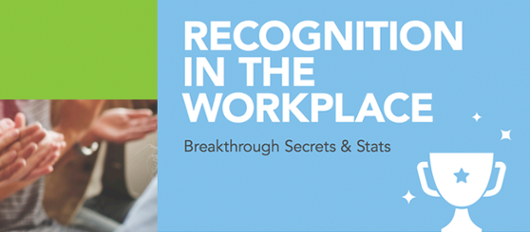How to Do Employee Recognition (And 7 Things Not to Do)

We’re all familiar with the benefits of employee recognition. When employees feel valued, they’re more engaged, more motivated, and more likely to go the extra mile for their company (just to name a few).
But despite knowing the impact it can have on employee morale and business success, some companies still fail at employee recognition.
So what’s holding them back? And more importantly, how do you get it right?
Below we’ll cover how to do employee recognition (plus what not to do) so you and your employees can reap all the benefits of your employee recognition program.
Recognizing employees according to their preferences
All recognition is not created equal. Simply giving an employee a pat on the back or sending a generic email can actually have the opposite of the intended effect.
These insincere forms of recognition can confuse or turn off an employee. To really affect engagement, recognition should be specific and thoughtful. Yet only 56.4% of employees say they receive thoughtful recognition from their manager.
The key to genuine recognition is to get personal with your employees. Learn how your employees prefer to be recognized so you can tailor your appreciation to each person. Over time generic recognition will feel disingenuous and will lose all effect on employee engagement.
How to do employee recognition
Of course, getting to know your employees is only the first step. Consider these tips as you dole out recognition in the workplace. They’ll help you provide feedback that fills employees with a sense of ownership and pride.
Think about what motivates the employee.
All employees desire recognition in their own way. Some prefer to be recognized publicly during a meeting or on your recognition software. Others are more introverted and prefer subtle recognition such as a card or a private comment.
Consider what drives each individual employee:
- What type of work energizes them?
- What are they most proud of?
- Are they outgoing or shy?
- What company goal and/or value was impacted?
Recognizing employees for things they’re passionate about will be more meaningful and sincere.
Remember what's important to the organization.
Keep your company’s mission and values in mind. If someone’s actions exemplify the fundamental beliefs on which your organization is based, celebrate them and encourage other employees to do the same.
Try to identify behavior that impacts the most important goals, then recognize those individuals. This reminds everyone of the organization’s important benchmarks and keeps them pushing toward accomplishing them.
Enhance recognition with storytelling.
The more detail you can provide in your recognition, the better. Generic statements like, "Thanks for helping me out yesterday," serve little purpose. The recipient may or may not remember what you’re talking about, and even if they do, his or her coworkers are in the dark.
Go into detail on how the person helped you and what made their support meaningful. Be specific, such as, "I really appreciate you staying late to help me with my expense reports last night. Thanks to you, I was able to make my tight deadline."
Reading a story on an engagement platform and discovering those extra details cements why the action is valued and encourages similar behavior from other employees.
Be creative and personal with your recognition efforts
What’s your company’s go-to method of recognition? Do employees receive the same type of praise, regardless of their contribution to the team or personal preferences? A generic, stale, and predictable recognition strategy is probably having a negative effect on your employees.
Recognition is one of the most important drivers of employee engagement, but it has to come from a meaningful place. Employees see right through cookie-cutter praise. Get creative with employee appreciation, such as:
- Hosting a happy hour
- Putting snacks at the employee’s cube or team area
- Sending a company-wide email
- Celebrating personal milestones
If you are authentic in recognizing their hard work, they’ll appreciate you and be encouraged to continue accomplishing organizational goals.
7 recognition mistakes: what not to do for employee recognition
Understanding what doesn’t work is often just as important as knowing what to do when it comes to employee recognition. If you want your recognition to make a positive impact, make sure you’re not sabotaging your efforts. Here are 7 mistakes leaders make (and what to do instead).
1. You don’t recognize employees in real-time.
Don’t leave an employee waiting to be recognized. Recognizing employee contributions as they happen shows that you’re invested in their work and success and keeps them motivated to hit the next milestone. Real, authentic recognition happens in real-time.
2. You only recognize achievement.
If you’re only recognizing success and goal achievement, you’re doing employee recognition wrong. When you don’t appreciate employees for putting in extra hours, taking on a heavier workload, or going above and beyond their job description, they’ll be frustrated and likely won’t put in that extra effort again.
3. Your program doesn’t allow peer-peer recognition.
Recognition from immediate managers and senior leaders is important, but don’t overlook the impact of praise from a close coworker. Allow peers to give one another kudos when they see an opportunity, as team members and work buddies often have more insight into employee effort and morale than upper-level leaders do.
4. You don’t make employee recognition public.
Public recognition gives peers, managers, and senior leaders visibility to employees’ hard work and success. And when the entire company has visibility to recognition (or lack thereof), employees are motivated to work harder and achieve results. If employee recognition is kept just between a manager and employee, you miss out on that benefit.
5. You don't incorporate recognition into performance conversations.
Ignoring employee recognition in manager-employee performance conversations or reviews is a missed opportunity. Incorporating employee recognition (given and received) not only helps inform performance conversations but also solidifies the importance of employee recognition in your culture.
6. You don’t ask for feedback on your recognition program.
Many organizations don’t know if they’re failing at employee recognition because they don’t ask for feedback. Use your one-on-one meetings or employee surveys to find out if your employees feel valued if they’re receiving genuine recognition in real-time, and what you can do to improve your organization’s employee recognition strategy.
7. You don’t utilize recognition software.
If you’re not connecting with employees where they’re at and leveraging user-friendly technology to make every aspect of your employee recognition more efficient, more accessible, and more personable, then you’re behind the times. Make sure you've checked all boxes when selecting the right employee recognition software for your culture.
Level up your recognition game with Quantum Workplace Recognition—download our guide to Recognition in the Workplace.







